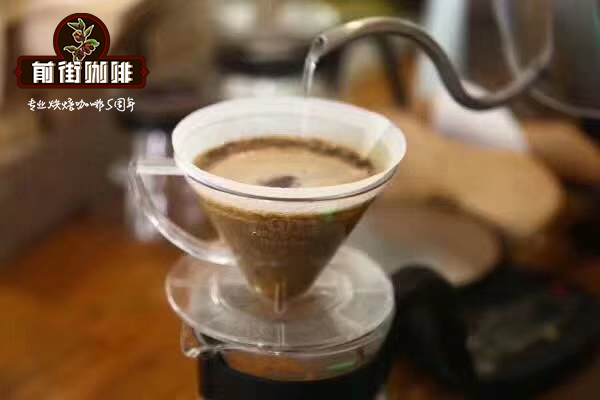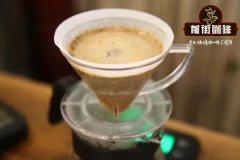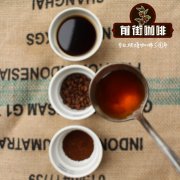Grade of Ethiopian coffee | ECX rating and scoring criteria? Special selection of ECX in Yega Xuefei producing area

Professional coffee knowledge exchange more coffee bean information please follow the coffee workshop (Wechat official account cafe_style)
Grade of Ethiopian coffee | ECX rating and scoring criteria? Yega Xuefei production area ECX specially selected washing G1 flavor?
The highest grades of Yirgacheffe and Sidamo are Grade 2 and Grade 3 (G2 and G3), and most of the sun-processed coffees in eastern Ethiopia are Grade 4 or Grade 5 (G4 and G5). In many cases level 4 coffee is marked as level 5 in order to reduce taxes. The current classification is not uniform and messy, because there are also first-and second-tier (Grand G2) Yirga Cheffe processed by tanning, but the highest level of Harald (Harar) is level four (G4).
Variety: Heirloom native species
Producing area: Ethiopia Yirgacheffe Yegashev, Ethiopia
Treatment method: Washed / washing treatment method
Class: E C X selected G1
Altitude: 1800-2000 m
Flavor description: wild ginger flower fragrance, spice Earl Grey Tea, cocoa, sweet and juicy, smooth taste
The coffee producing areas of Ethiopia are Sidamo, Harald and Sidamo, Harrar and Yirgacheffe. Sidamo and Harrar are provinces and divisions, Sidamo is located in the south of Ethiopia bordering Kenya, and Harrar is bordering Somalia in the east of Ethiopia. Although Yirgacheffe is a community in the Sidamo region, its coffee is considered to be the best in Ethiopia because of soil composition and water content.
In the West, Ethiopian coffee is generally labeled and (Yirgacheffee, Sidamo and Harrar) sold on the market. In the field of boutique coffee, there are also five other small places of coffee, namely Lim, Gemma, Le Campdi, Becca and Limmu, Djimmah, Lekempti, Bebeka and Wolega. The most common is Essesidamo or Harald coffee (Either Sidamo or Harrar coffee).
Harald Coffee (Harrar Coffee) comes from the eastern highlands of Ethiopia, with medium bean size, green yellow, medium acidity, full alcohol thickness and typical mocha flavor (mocha flavor). It is one of the most famous coffee in the world.
Wollega (Nekempte) coffee comes from the west of Ethiopia, with medium to large beans and is famous for its fruity flavor. The color is green and brown (greenish, brownish color), and the acidity and alcohol thickness are good. Can be made to match, can also be individual products.
Limu Coffee coffee is famous for its aroma and wine taste (spicy and Winnie flavor) and is very popular in Europe and the United States. The acidity and alcohol thickness are good, and the water-washed lim coffee is also the favorite of fine coffee. The bean shape is medium, greenish blue, mostly round.
Sidamo coffee (Sidama Coffee) has medium bean shape and green gray. Hidamo washed coffee is known as sweet coffee (sweet coffee) because of its balanced taste and flavor. it has delicate acidity and good alcohol thickness. it is produced in the south of Ethiopia and can be mixed with fine products.
Yirgacheffe Coffee coffee has a strong floral flavor.
Water washing is one of the best high-estate coffee in the world, with soft acidity and rich alcohol thickness. Top and Bebeka coffee, with low acidity but high alcohol thickness, are indispensable members of the blended coffee.
Ethiopia's coffee cultivation is divided into:
● forest coffee forest coffee (8-10%), coffee trees and other crops coexist in the primeval forest, without any artificial care, farmers will pick coffee fruits regularly.
● forest-semi-forest coffee semi-forest coffee (30-35%), the coffee planting area is between the forest and the range of farmers' lives, coffee trees are naturally produced varieties like forest coffee, and farmers will manage coffee planting areas and grow other cash crops.
● pastoral coffee garden coffee (50-55%), coffee trees are planted around farmers' living areas, and most of them are grown by farmers themselves.
● plantation coffee plantation coffee (5-6%), a large private grower, has more treatment facilities and production capacity.
Most of the coffee cultivation in Sidamo and Yega Xuefei belongs to the pastoral coffee model, in which coffee farmers plant coffee trees near their living areas and harvest them during the harvest season. it is then sent to a nearby treatment plant built on water for unified treatment (or purchased by a middleman). In addition to a small number of plantations that have the strength to grow, pick and handle raw coffee beans independently, many coffee beans from different regions and varieties will be centrally processed by the processing plant and then sent to the auction house for official evaluation and grading. This is one of the reasons why many Ethiopian coffee beans are named after processing plants or cooperatives, and it is also one of the reasons why the same batch of coffee beans are mixed with multiple coffee varieties. even the flavor of different batches of coffee beans produced by the same treatment plant will be significantly different.
The Ethiopian Commodity Exchange (ECX-Ethiopia Commodity Exchange) is an agricultural market where buyers and sellers come together to trade, ensuring quality, delivery and payment. ECX's vision is to change Ethiopia's economy by becoming the first choice in global commodity markets. ECX's mission is to connect all buyers and sellers in an efficient, reliable and transparent market through the use of innovation and technology, based on continuous learning, fairness and commitment to excellence.
ECX distributes regional warehouses throughout Ethiopia, providing collection, grading and storage of crops, and then enters a unified trading and auction platform to buy and sell transactions for registered members of ECX. The buyers here are actually private exporters, and Ethiopia has required all private exporters to buy and sell coffee beans through ECX since 2008. Its problem is that it just doesn't meet the traceability requirements of current buyers. ECX trades coffee only by region and fails to tell you which processing station it comes from, or it may come from many different processing stations and may be mixed together in sacks and auctioned in a large batch. But I believe that after the following rigorous selection of the Speciality G1, will you still question its quality?
Ethiopia's old grading method was simply classified according to the number of defects. The highest grade of beans washed with water was Grade 1-G1 and the highest grade of sunlight was Grade 3-G3. The current grading method is based on the combination of physical attribute characteristics and cup flavor characteristics established by ECX.
All coffee is defined as three types according to the way it is treated, insolated or washed:
A. Speciality (washed & unwashed): the number of defects is small, and the cup test has high flavor quality.
B. Commerical (washed & unwashed): not up to the boutique level, but higher than the domestic consumption grade
C. Local / Domestic (washed & unwashed): coffee with a large number of defects (unripe beans), out of season and poor storage.
Among them, Specialty and Commerical are aimed at the international export market, and Local is the coffee sold for the domestic market.
The specific grading and scoring criteria of ECX are as follows:
a. Score definition of washing treatment method
1. Physical characteristics account for 40%: number of defects (20%), appearance size (10%), color (5%), smell (5%).
2. 60% of the cup quality: cleanliness (15%), acidity (15%), taste (15%), flavor characteristics (15%).
b. Score definition of solarization treatment
1. Physical characteristics account for 40%: number of defects (30%), odor (10%)
2. 60% of the cup quality: cleanliness (15%), acidity (15%), taste (15%), flavor characteristics (15%).
c. Overall summary:
1. According to the method of treatment, all coffee is classified as: sun exposure, water washing.
two。 Each scored 9 grades of G1-G9 according to physical characteristics and cup test basic quality.
3. The G1-G3 is tested again according to the SCAA standard, and its flavor attribute is evaluated in more detail, and the flavor attribute is not lower than that of the cup.
G1GI G2 with a score of 85 is rated as Q1
4. It is rated as Q2 for G1meng G2 G3 between 80 and 85, and G3 for all G1 Magi G2 G3 with scores below 80.
5. Q1 and Q2 are classified as Specialty Grade exports. G4-G9 kept the original grade unchanged and was classified as CommercialGrade export together with G3.
Important Notice :
前街咖啡 FrontStreet Coffee has moved to new addredd:
FrontStreet Coffee Address: 315,Donghua East Road,GuangZhou
Tel:020 38364473
- Prev

Hawaiian Kona Coffee Farm recommends a good brand of Hawaiian coffee in the United States.
For more information on coffee beans, please follow the Coffee Workshop (Wechat official account cafe_style) Coffee Bean Plantation in Kona, Hawaii. In 1825, John Wilkinson, an English agronomist named John Wilkinson, transplanted some coffee from Brazil to grow in the coffee plantation of Chief Birch on the island of Oahu. Three years later, a man named Samuel Reve
- Next

Peruvian organic coffee beans | Camarca San Ignacio small farmers wash Kaddura and card in micro batches
Professional coffee knowledge exchange more coffee bean information please follow the coffee workshop (Wechat official account cafe_style) Peruvian organic coffee beans | Camanca San Ignacio small farmers micro-batch washing Kaddura, Kaduai beans flavor? Peru (Peru) is also a big coffee producer. Up to 98% of Peruvian coffee is grown in forest areas, and most producers are small farmers.
Related
- Detailed explanation of Jadeite planting Land in Panamanian Jadeite Manor introduction to the grading system of Jadeite competitive bidding, Red bid, Green bid and Rose Summer
- Story of Coffee planting in Brenka region of Costa Rica Stonehenge Manor anaerobic heavy honey treatment of flavor mouth
- What's on the barrel of Blue Mountain Coffee beans?
- Can American coffee also pull flowers? How to use hot American style to pull out a good-looking pattern?
- Can you make a cold extract with coffee beans? What is the right proportion for cold-extracted coffee formula?
- Indonesian PWN Gold Mandrine Coffee Origin Features Flavor How to Chong? Mandolin coffee is American.
- A brief introduction to the flavor characteristics of Brazilian yellow bourbon coffee beans
- What is the effect of different water quality on the flavor of cold-extracted coffee? What kind of water is best for brewing coffee?
- Why do you think of Rose Summer whenever you mention Panamanian coffee?
- Introduction to the characteristics of authentic blue mountain coffee bean producing areas? What is the CIB Coffee Authority in Jamaica?

